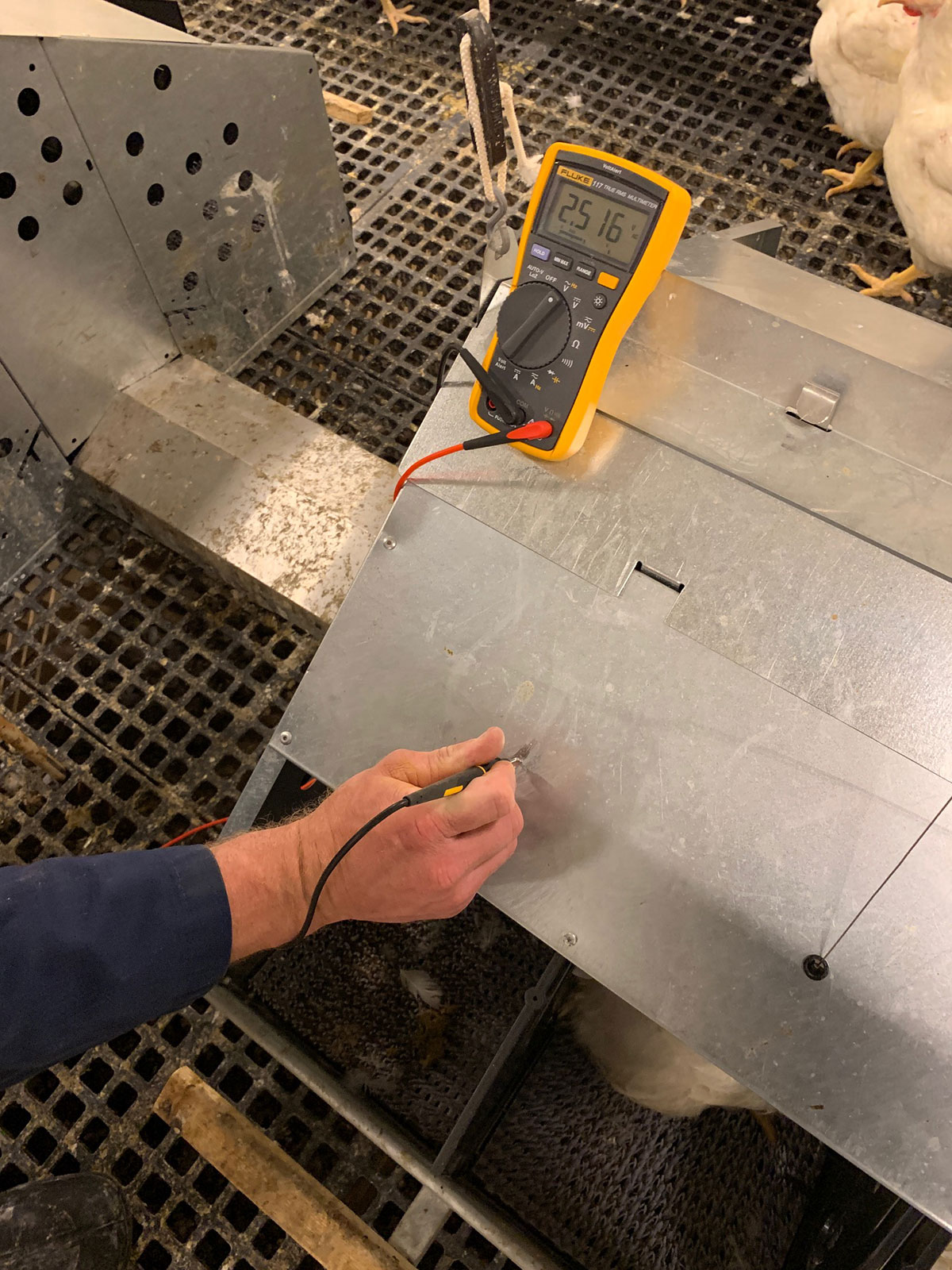I'm always looking out for interesting information, and I wanted to pass along to you this paper on Stray Voltage in Broiler Breeder Hen Housing that was shared with us by the National Poultry Technology Center at Auburn University. I hope you find it has value.


|
I'm always looking out for interesting information, and I wanted to pass along to you this paper on Stray Voltage in Broiler Breeder Hen Housing that was shared with us by the National Poultry Technology Center at Auburn University. I hope you find it has value.

This paper was compiled by the National Poultry Technology Center at Auburn University In Cooperation With Utility Provider Professionals (Additional Work Continuing). It addresses the problems of stray voltage in hen housing: how to know if you have a problem, the best remedies and the economics associated with this issue.
 Stray voltage is a voltage resulting from the normal delivery or use of electricity on a multi-grounded power distribution system. The voltage exists between two conductive surfaces and can be felt by a person or an animal if the two surfaces are contacted at the same time. Stray voltage is typically not considered hazardous but can be problematic in certain locations, including dairy farms, poultry layer barns, swimming pools and boat docks. In such locations, the animal or human that is exposed to the stray voltage can receive a small shock or tingling sensation. In poultry layer facilities, if a hen that is ready to lay her egg receives a shock or tingle when contacting both the floor and the nest, she may be reluctant to enter the nest, and as a result, lay the egg on the floor. Floor eggs cannot be salvaged for many reasons and are considered lost eggs. Elevated levels of stray voltage on laying nests are known to decrease egg production by as much as 10%, a very serious economic problem for the poultry industry. Stray voltage is a voltage resulting from the normal delivery or use of electricity on a multi-grounded power distribution system. The voltage exists between two conductive surfaces and can be felt by a person or an animal if the two surfaces are contacted at the same time. Stray voltage is typically not considered hazardous but can be problematic in certain locations, including dairy farms, poultry layer barns, swimming pools and boat docks. In such locations, the animal or human that is exposed to the stray voltage can receive a small shock or tingling sensation. In poultry layer facilities, if a hen that is ready to lay her egg receives a shock or tingle when contacting both the floor and the nest, she may be reluctant to enter the nest, and as a result, lay the egg on the floor. Floor eggs cannot be salvaged for many reasons and are considered lost eggs. Elevated levels of stray voltage on laying nests are known to decrease egg production by as much as 10%, a very serious economic problem for the poultry industry. 
Click here or on the image to read and download the paper. Please feel free to post your comments.
|
|

